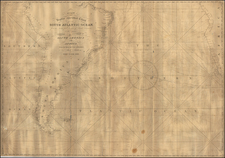Search
Richard Patten began in business in New York in 1813, selling nautical books and charts, and domestic and imported instruments for use at sea and on land. Patten’s trade label stated that he was the "only Manufacturer of Sextants & Quadrants" in New York, and that all of his "instruments in the above line" were "made to order & warranted being divided on an Engine after the Plan of Ramsdens."
Edmund Brown and Harvey W. Hunt took over Patten’s shop in the mid-1830s, boasting that while working for Patten they had been "principally employed at making the best instruments, such as Theodolites, Levels, Railroad Graders, Surveyor’s Compasses, Circular Protractors, and in fact all Instruments in the Engineering and Surveying departments."
Patten moved to Washington, D.C., around 1842, took his son George into partnership, and began trading as Richard Patten & Son. The Pattens moved to Baltimore around 1853, and returned to Washington at the start of the Civil War.
Richard Blunt sued Richard Patten for infringing upon Blunt's copyright in Blunt's "New Chart of the North-Eastern Coast of North America. . . " Blunt claimed that Patten had copied him
. . . so far as the same relates to the South shoal of Nantucket, and the soundings adjacent thereto; and also to George's bank and the soundings adjacent thereto; and between the said bank and Cape Ann, and Nantucket shoals, alleging that the said chart published by the defendant, and the surveys and soundings copied thereon, were copied and taken from surveys and soundings made by [Blunt] and published by him in a chart . . . on the 2d of October, 1821 . . . [claiming the area] was imperfectly known and described in the charts published prior to the year 1821, when he, at his own expense, caused a survey to be made, and a competent knowledge of the shoal for the first time obtained and published on his chart And charges[Patten] with having availed himself of the information thus acquired by the labor, and at the expense of the complainant in the publication of his chart.

